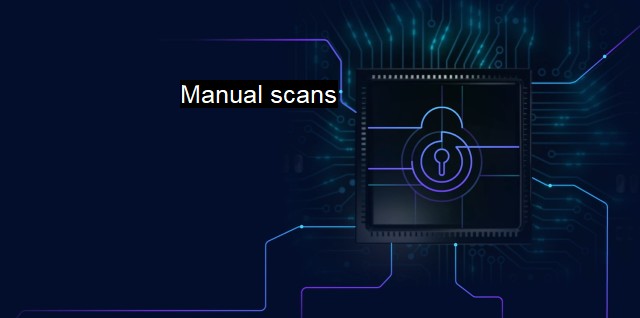What are Manual scans?
Understanding the Importance of Manual Scans in Cybersecurity: Types, Processes, and Significance
"Manual scans" is a term that is commonly used within the cybersecurity and antivirus realm of computing. As the phrase implies, it entails a scanning process initiated manually by the user to discern any potential threats such as viruses, trojan horses, spyware, malware, or any other hidden risks potentially compromising the integrity, security and functionality of a server, network, or computer system.Within the vast realm of cybersecurity, the importance of manual scans cannot be understated. Manual scanning presents an option for users to take a more proactive approach in preempting and counteracting potential threats, providing an additional veil of security on top of automatic scans that run in the background.
Interestingly, manual and automatic scans complement each other in their modes of operation. While automated scanning operates as a continuous process, executing on a recurrent basis and scanning the hardware, software and all incoming and outgoing data for threats, manual scans are typically initiated when required by the user or system administrator.
A user may resort to a manual scan when troublesome symptoms begin to surface. This could take shape in form of computer freeze-ups, slow performance, or inexplicable behavior exhibited by a machine. This is where the advantage of manual scans steps into the spotlight, empowering the user to marry empirical evidence – symptoms of potential threats – with a responsive action, running a scan.
Manual scans tend to cover a more comprehensive expanse compared to automated scans. An automated scan may not delve into network drives, detached storage media and peripherals, or software awaiting to be installed. Therefore, despite their complementary relationship, manual scans often have to step in to ensure that standalone items receive scrutiny.
Many times, cybersecurity analysts recommend manual scans to supplement real-time or automated scans. Manual scans can function as a full system scan digging into every nook and cranny of the computer, leaving no stone unturned in the hunt for potentially malicious programs. By offering manual scans that run all-encompassing checks, antivirus software can relay the assurance of a second layer of security.
In manual scanning, user control is significant. Even if an antivirus or security software tool is frequently updated to adapt to new risks, manual scans allow the user to determine the depth and breadth of the scan. Users have the capacity to select individual folders or drives for the manual scan, allowing for precision targeting.
Precision becomes crucial when time is of the essence. Sometimes, demand arises to execute a scan on a specific set of files or a singular suspicious program, rather than running a long and winding scan on the entire system. Here, the option to manually exploit system resources to their fullest capabilities allows users to culminate manual scanning in effective results in a shorter timeframe.
Manual scans typically offer more freedom with respect to problem resolution once a threat is detected. Some scanning programs merely seclude or discard items that arouse suspicion. With manual scans options to clean, quarantine, or outright delete threats identified can be dictated by the user.
Manual scans act as a vital instrumental tool for users involved in the larger cybersecurity and antivirus landscape. By providing direct control, precision and extended reach beyond the realms of automated scans, manual scanning offers reinforcement and added protection. Whether a user seeks to resolve an immediate concern, conduct routine maintenance, or run a thorough security check, manual scans deliver tailored options and adaptive measures catering to individualized needs. Consequently, manual scans indeed form a valuable asset within the cybersecurity arsenal.

Manual scans FAQs
What is a manual scan in cybersecurity?
A manual scan in cybersecurity refers to a process of scanning a computer or network for viruses, malware, and other potential threats using a human expert's knowledge and expertise.How is a manual scan different from an automated scan?
An automated scan uses pre-programmed algorithms and rules to scan a system for threats, while a manual scan involves a cybersecurity expert analyzing the system and using their expertise to look for potential risks.When should a manual scan be used instead of an automated scan?
A manual scan should be used when an automated scan has failed to detect a specific threat, or when there is a suspicion that a system has been compromised but the automated scan has not detected anything.What are the benefits of using manual scans in cybersecurity?
Manual scans provide a more thorough and comprehensive analysis of a system, as they involve a highly trained cybersecurity expert examining the system in detail. They can also identify complex or unknown threats that may be missed by an automated scan, and provide a greater level of assurance that a system is secure.| | A | | | B | | | C | | | D | | | E | | | F | | | G | | | H | | | I | | | J | | | K | | | L | | | M | |
| | N | | | O | | | P | | | Q | | | R | | | S | | | T | | | U | | | V | | | W | | | X | | | Y | | | Z | |
| | 1 | | | 2 | | | 3 | | | 4 | | | 7 | | | 8 | | |||||||